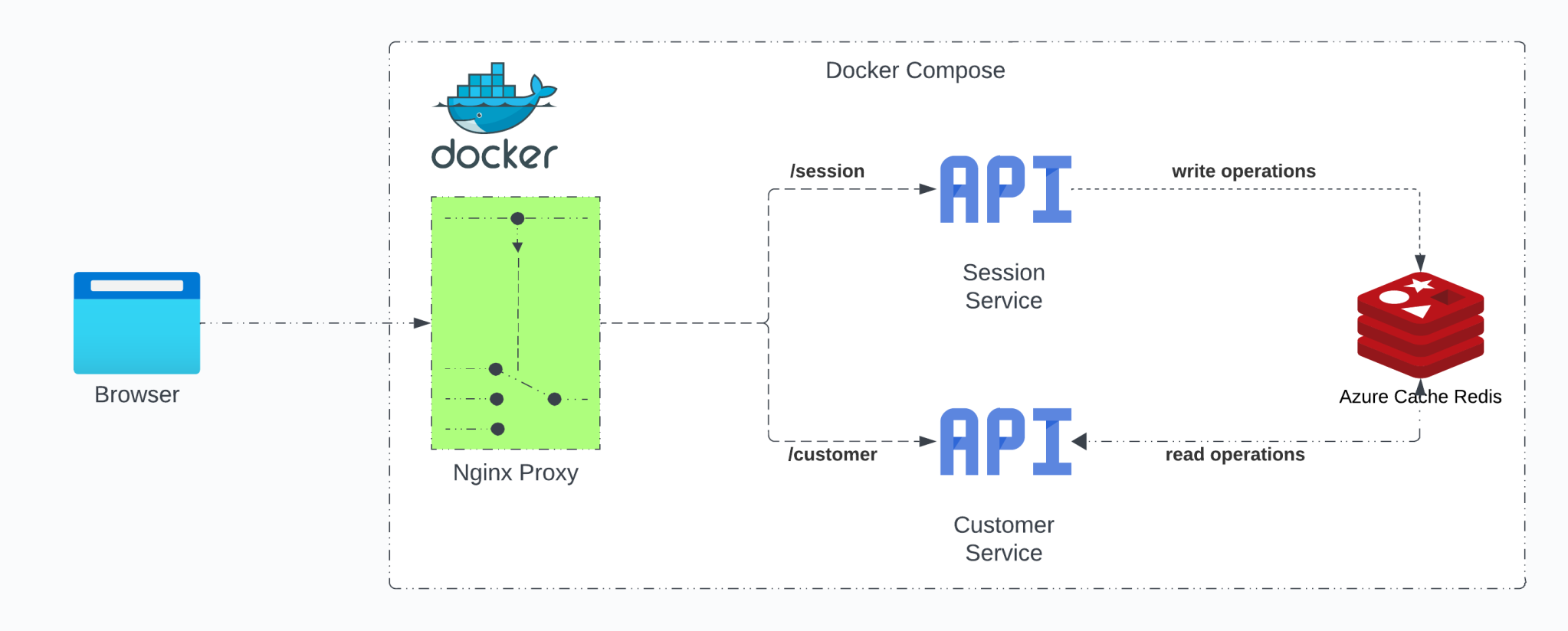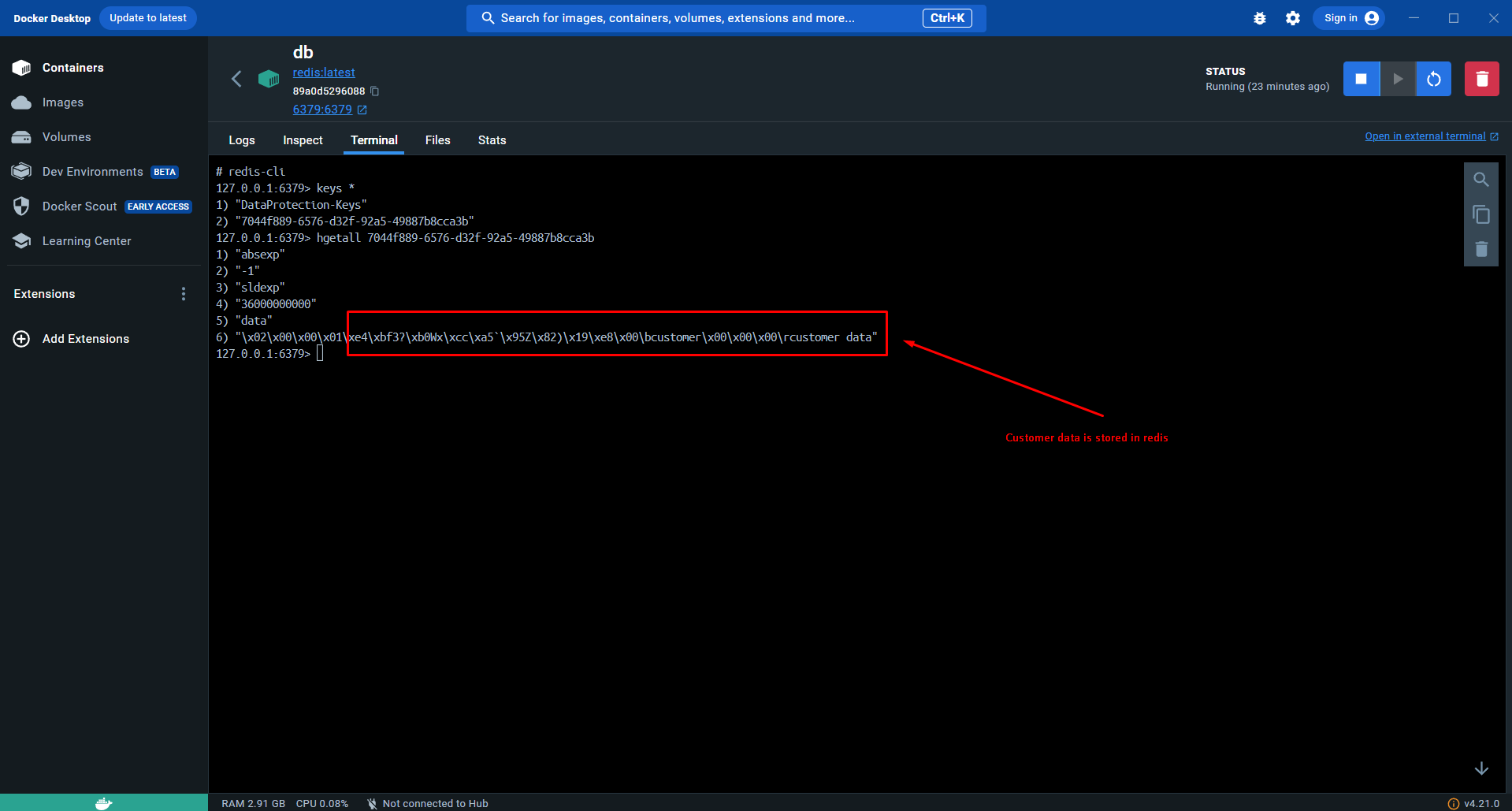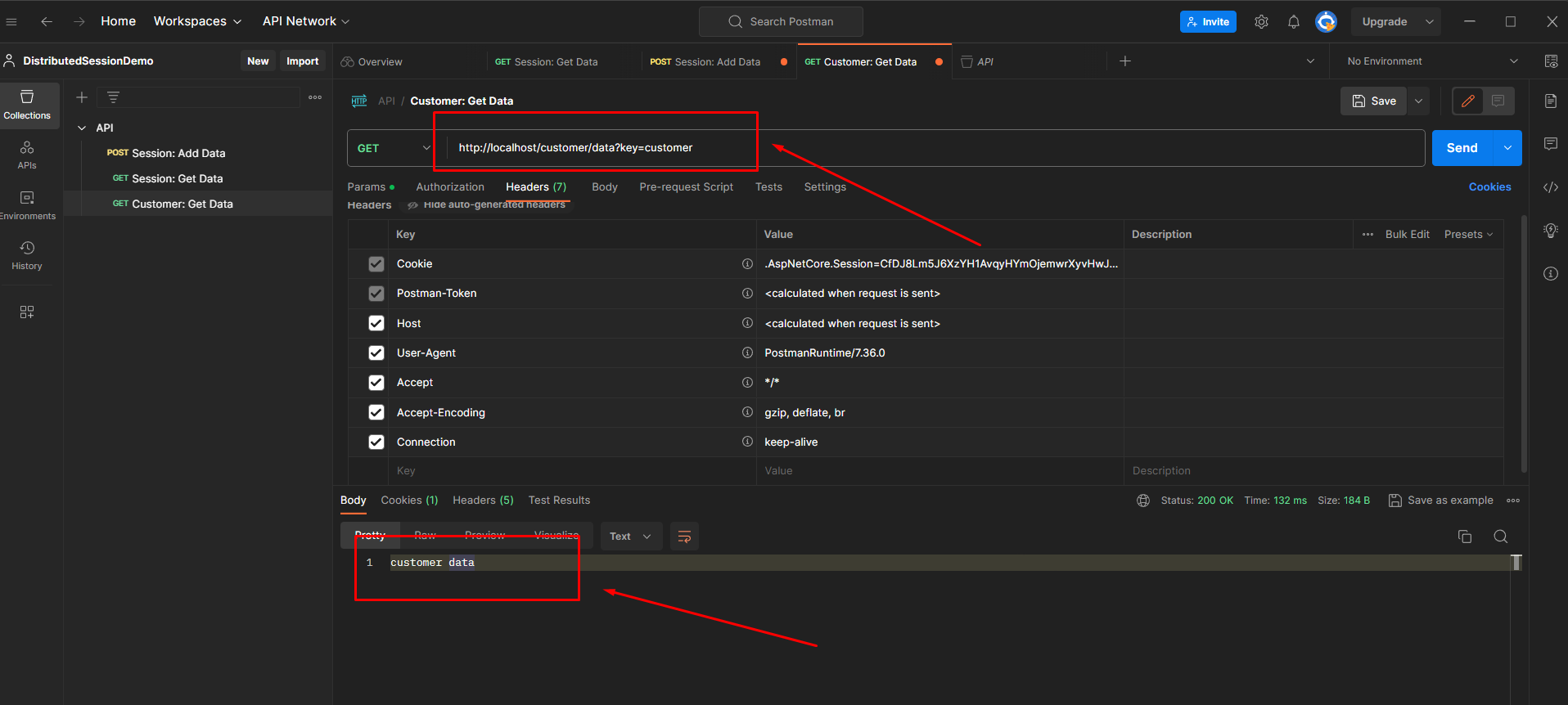Distributed Session Data in .NET 8
Build a distributed session sharing system using .NET 8, Docker, Nginx, and Redis
For the past few years, microservices have grown popular and many teams have adopted them. During a migration from a monolith CMS to a micro-frontend architecture, distributed session data became a top priority.
In this post, we’ll build a distributed session data sharing system with .NET 8, Docker, Nginx, and Redis.
GitHub repository with complete code:
https://github.com/trungtruongpham/distributed-session

System components
-
Nginx
Used as a reverse proxy to route requests by path:/session→ SessionService/customer→ CustomerService
Example:
http://localhost/session/data?key=abcis routed to SessionService. -
SessionService
A simple .NET API for session CRUD operations. -
CustomerService
A business service that reads session data. -
Redis
Acts as the session store for best performance. -
Docker
All components are orchestrated via Docker Compose.
Implement components
1. SessionService
Configure Redis connection in appsettings.json:
{
"Logging": {
"LogLevel": {
"Default": "Information",
"Microsoft.AspNetCore": "Warning"
}
},
"AllowedHosts": "*",
"ConnectionStrings": {
"Redis": "redis:6379,abortConnect=False"
}
}Register Redis as the session provider and enable sessions in Program.cs:
using Microsoft.AspNetCore.DataProtection;
using StackExchange.Redis;
var builder = WebApplication.CreateBuilder(args);
var redisConnectionString = builder.Configuration.GetConnectionString("redis") ?? "localhost";
// Data protection (optional but recommended)
builder.Services.AddDataProtection()
.PersistKeysToStackExchangeRedis(ConnectionMultiplexer.Connect(redisConnectionString))
.SetApplicationName("DistributedSessionDemo");
// Redis-backed cache for session
builder.Services.AddStackExchangeRedisCache(options =>
{
options.ConfigurationOptions = ConfigurationOptions.Parse(redisConnectionString);
});
// Enable session
builder.Services.AddSession(options =>
{
options.IdleTimeout = TimeSpan.FromHours(1);
});
var app = builder.Build();
app.UseSession();
app.MapControllers();
app.Run();Create a simple controller for writing and reading session data:
using Microsoft.AspNetCore.Mvc;
namespace SessionService.Controllers;
[ApiController]
[Route("")]
public class SessionController : ControllerBase
{
[HttpPost("data")]
public ActionResult AddSessionData(string key, string data)
{
HttpContext.Session.SetString(key, data);
return Ok($"Write data to session with key:{key} and value: {data}");
}
[HttpGet("data")]
public ActionResult GetSessionData([FromQuery] string key)
{
var result = HttpContext.Session.GetString(key);
return Ok(result);
}
}2. CustomerService
Configured similarly to SessionService (Redis, session), but exposes a read endpoint:
using Microsoft.AspNetCore.Mvc;
namespace CustomerService.Controllers;
[ApiController]
[Route("")]
public class CustomerController : ControllerBase
{
[HttpGet("data")]
public IActionResult GetCustomerData(string key)
{
var customerCart = HttpContext.Session.GetString(key);
Console.WriteLine(customerCart);
return Ok(customerCart);
}
}3. Nginx
Proxy to each service and forward cookies:
server {
listen 80;
listen [::]:80;
server_name localhost;
location /session/ {
proxy_pass http://session-service:8080/;
proxy_set_header Cookie $http_cookie;
}
location /customer/ {
proxy_pass http://customer-service:8082/;
proxy_set_header Cookie $http_cookie;
}
error_page 500 502 503 504 /50x.html;
location = /50x.html {
root /usr/share/nginx/html;
}
}4. Docker Compose
Run the full stack locally:
version: "3.8"
services:
session-service:
container_name: session-service
build:
context: ./SessionService
dockerfile: ./SessionService/Dockerfile
ports:
- "8080:8080"
environment:
- ASPNETCORE_ENVIRONMENT=Development
- ASPNETCORE_URLS=http://+:8080
links:
- "redis"
networks:
- internal
customer-service:
container_name: customer-service
build:
context: ./CustomerService
dockerfile: ./CustomerService/Dockerfile
ports:
- "8082:8082"
environment:
- ASPNETCORE_ENVIRONMENT=Development
- ASPNETCORE_URLS=http://+:8082
links:
- "redis"
- "session-service"
networks:
- internal
nginx-proxy:
image: nginx:latest
ports:
- "80:80"
volumes:
- ./nginx/default.conf:/etc/nginx/conf.d/default.conf
restart: always
depends_on:
- session-service
networks:
- internal
redis:
image: redis:latest
container_name: db
ports:
- "6379:6379"
networks:
- internal
networks:
internal:
driver: bridgeStart everything:
docker compose up -d
Testing
- Add session data by calling SessionService (e.g., via Postman)
- Verify the session data is persisted in Redis
- Read the same session data from CustomerService
You can find a Postman collection in the repository.



Pros and cons
Pros
- Single responsibility: Session logic is centralized in SessionService
- Scalability: Scale services independently; distribute load effectively
- Performance: Reading session directly from Redis reduces coupling and latency
Cons
- Complexity: More moving parts, more setup effort (especially for local dev)
- Data consistency: Ensure readers get the latest session state
- Security: Reading session data across multiple services requires careful threat modeling
- Potential deadlocks: Be cautious with cross-service flows
InvertDev - Trung Truong - 2024-01-01